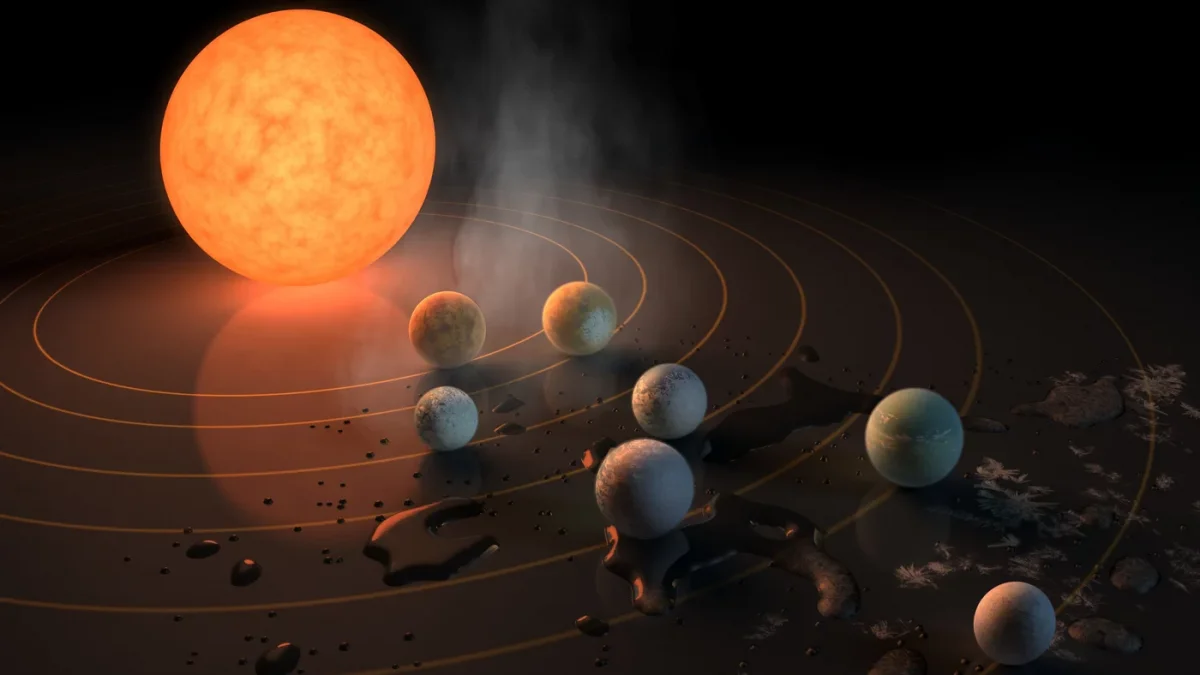Contrary to expectations, the second exoplanet in the particularly interesting TRAPPIST-1 star system does not have a dense atmosphere either. This was determined by a research group led by Sebastian Zyba of the Max Planck Institute for Astronomy using the James Webb Space Telescope. He now explains that one was actually hoping for a celestial body, such as Venus, surrounded by a thick, hot atmosphere. But that can certainly be ruled out. Alternatively, it would likely have an atmosphere as dense as Earth at most, but it could also be a purely rocky planet without any significant gas envelope. However, even the ultra-modern space telescope has reached its limits in an effort to prove it.
First expectations disappointed
So far, seven rocky planets have been discovered around the red dwarf star TRAPPIST-1, in which even the presence of liquid water seemed possible. However, only the three exoplanets TRAPPIST-1e, f, and g are in the star’s so-called habitable zone. In the last two parts, which are still easier to explore, conditions like those on Venus would have been expected, that is, an atmosphere denser than on Earth. For this purpose, exoplanets orbiting close to their star had to retain these gaseous shells for a long period of time, despite the intense stellar winds and intense ultraviolet radiation. Its relatively large mass would have helped, Ziba says. With TRAPPIST-1b, hope was already dashed, it looks like Mercury.
Although the amount of radiation TRAPPIST-1c receives from its star closely matches that of Venus, it also failed to retain a once dense atmosphere, the team wrote. The data obtained are not consistent with any kind of thick gas envelope that is rich in carbon dioxide and has a pressure more than ten times that of Earth. However, a wide range of mixtures of oxygen and carbon dioxide can still be used at pressures between one and 100 percent of the value at sea level. So while it is not currently possible to determine this further, there is hope that rocky planets heavy enough can maintain atmospheres for a sufficient period of the star’s lifetime.
(Photo: NASA/JPL-Caltech/R Hurt, T Pyle (IPAC))
However, the data would also match a planet made of bare rock and with a weathered surface, Ziba squarely limits that. Even with what is undoubtedly the most powerful space observatory of all time, it is extremely difficult to capture the heat signature and potential atmospheric effects. However, the space telescope should make more observations and, if possible, see if there is an atmosphere there. The team believes that the European Southern Observatory’s Extremely Large Telescope (ELT) could provide the crucial clue. This is currently being built in Chile and is slated to be operational by the end of the decade. Your analysis of TRAPPIST-1c Submitted it to the journal Nature.
(mo)

“Prone to fits of apathy. Zombie ninja. Entrepreneur. Organizer. Evil travel aficionado. Coffee practitioner. Beer lover.”






More Stories
Pokémon Go Hyperbonus Raid Day with Mega Lucario – Here’s What You Need to Know
Researcher warns of fire in space – “one of the most dangerous scenarios in space travel”
Gamescom 2024: Asus partners with Webedia